Picture Book Master "Why did the snowman disappear? Love and Sadness by Graphic Writer Raymond Briggs
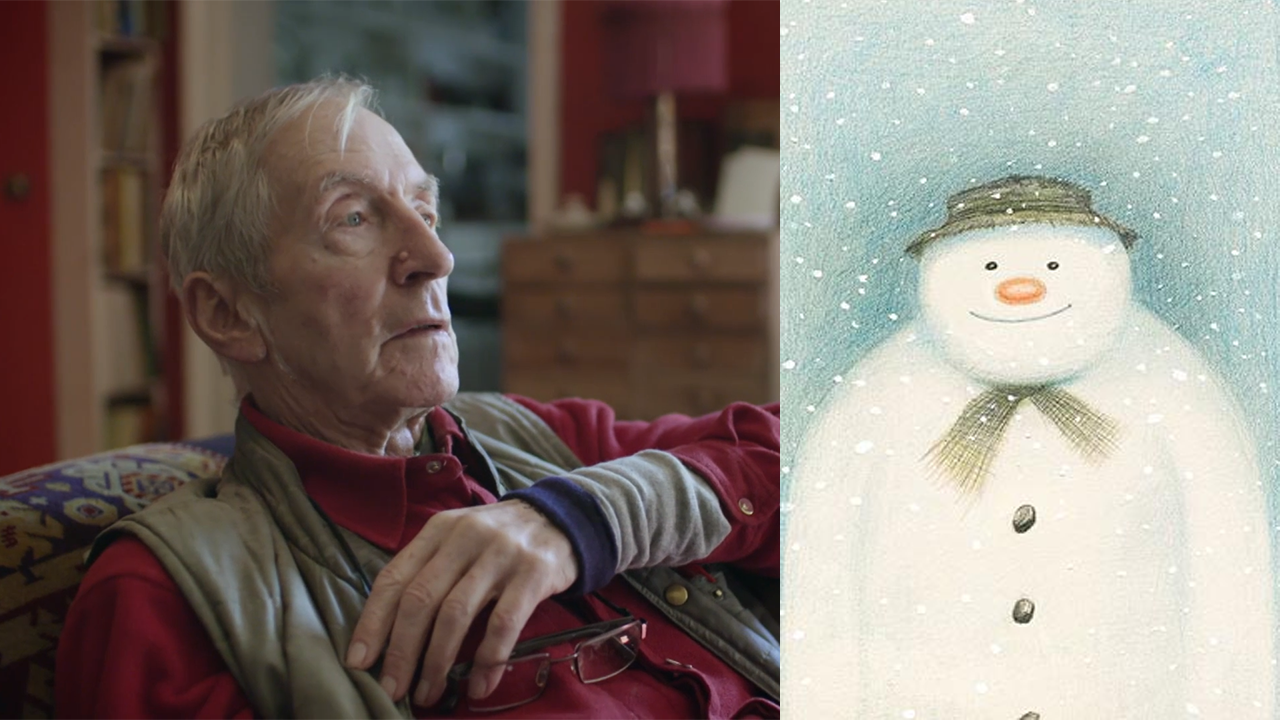
Author| Zhuang Shiying (Lecturer of Xiaoda Picture Book Museum)
Whenever the Christmas songs sounded at the end of the year and the weather was cold, gorgeous Christmas trees were erected everywhere, and the brilliant lights lit up the joyous atmosphere of the festival. The children also prepared Christmas stockings and waited for Santa Claus. Surprise them.
Books, music, movies and plays on the theme of Christmas, the list goes on and on. The "Christmas Books" launched by the bookstore in response to the occasion, although there are fresh creative ideas every year, there are also timeless classics, which are still loved by readers even after a long time. Picture book writer Raymond. Raymond Briggs' " Father Christmas " and " The Snowman" are works that span generations. Not only children like it, but even adults can't put it down, becoming the best endorsement for Christmas Book.
In particular, The Snowman, published in 1978, was adapted into a 29-minute cartoon by the British BBC in 1982, which is even more popular. The film is composed by composer Howard. To the melodic music of Howard Blake, the theme song "Walking in the Air", interpreted by the clear and ethereal voice of a young boy, creates an amazing journey of vision and hearing in harmony. This deeply touching film has since become part of the British Christmas tradition, which is shown on TV every Christmas.
The promotion of the film has pushed the wordless picture book "Snowman" to another peak. From mugs, toys, stamps, coins, to radio dramas, stage plays, concerts and fan groups, there are endless products and plans. Came all over the place. However, Brigg was dissatisfied with the adaptation of the cartoon. There were no elements related to Christmas in the original book. He believed that the audience was "hijacked by the romantic sentimentality of Christmas". In 2010, he publicly stated: "I hate Christmas!"
Brigg, who called himself a "miserable bastard," was deeply disturbed that The Snowman became a "holiday favorite." Why is there such a huge difference between the interpretation of this book by the writer and the reader? Is this just a "beautiful mistake"? To explore the reason, perhaps the answer lies in Brigg's life experience.
Brigg was born on January 18, 1934 in Wimbledon, a suburb of southwest London, England, to Alan Alexander Milne, the author of Winnie the Pooh, and Arthur Milne, author of The Swallow and the Amazon. Arthur Ransome's birthday is the same day.
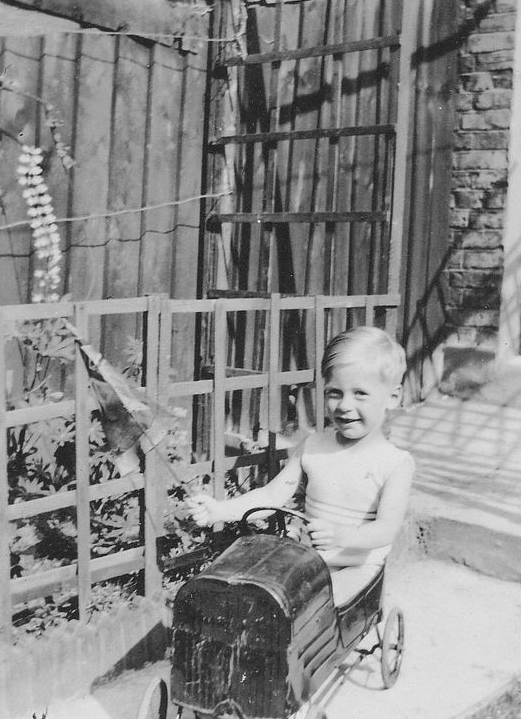
His father was a milk worker, and his mother served as a lady's maid before marriage. The two got married in 1930. Brigg was the only child that the late-married couple had been looking forward to for a long time, so he was cared for since he was a child. At the age of 5, 1.5 million children were evacuated to the countryside alone in order to avoid World War II air raids. The family of three lived in an Edwardian cottage, living a life of closeness, contentment and happiness.
In 1945, the smart Brigg passed the exam and was awarded a scholarship to Rutlish Grammer School. His mother was ecstatic, because getting into an education system that offered college-preparatory courses meant her son would be breaking away from the working class and taking a very different life path than his parents. Having just entered school, she has already begun to envision her son going to Oxford or Cambridge in the future, and then getting a good job in an office and becoming a middle-class person.
At first, Brigg wanted to be a newspaper reporter, but things began to change when he began to paint seriously at the age of 12. Father subscribed to the "Daily Mirror " which the working class likes to read. He especially liked the cartoons in the newspaper. Later, he found that the cartoons in " Punch " magazine were especially wonderful. He also tried to correspond with the author, hoping to get some guide. When the 15-year-old Brigg announced that he was going to go to art school, his parents were very shocked, thinking that the art industry would not make money and would never be able to rely on it for a living.
Wimbledon School of Art is a traditional art school with a very conservative ethos. When Brigg was interviewed for admission, the principal scoffed at his ambition to create comics, believing that comics were inferior to commercial design, and that he should not even read magazines. Although Brigg later affirmed that the school gave him the perfect training to become an illustrator, at that time this obscure young man, who did not even know who Van Gogh was, was full of infinite confusion about what constituted serious and real art.

Then Brigg studied in the Central School of Art for two years in the course of printing and plate making, and obtained the national painting and design certificate. In 1953 he enlisted for two years as a cartographer with the Catterick Signal and Communications Corps in Yorkshire. Life in the military without personal privacy is as painful as hell for Brigg, who is accustomed to being alone. He could only paint for free, and one of his paintings was given the opportunity to be exhibited in an exhibition of contemporary young artists and received excellent reviews, which inspired him to continue painting.
Even though he knew his parents were worried about him, Brigg applied for a scholarship after being discharged from the army and entered the Slade School of Fine Art at the University of London. But Brigg was not interested in oil paint at all, he wanted to create "pictures that tell a story", so he was sure that he could not become a painter of pure art.
Eager to prove to his parents that painting could be used for a living, Brigg tried many different jobs at the same time after graduation. He designs commercials, paints magazine covers, and illustrates books, as well as theater design, writing for radio shows, and filmmaking. He was not originally interested in children's books, but was invited by Mabel George, editor of Oxford University Press, to illustrate Peter and the Piskies by Ruth Manning-Sanders, a well-known author. In his visual interpretation of fairy tales, he showed High imagination and talent.
Between 1958 and 1970, Brigger illustrated nearly 30 books, including many nursery rhymes, children's poems, fairy tales and folk tales, accumulating his abundant energy to illustrate and create children's books with his brush. In particular, The Mother Goose Treasury , published in 1966, spent a year and a half meticulously drawing 897 color pictures. Brigg's drawings, sometimes wild and sometimes contemplative, embody all the violence, humor and sweetness of traditional nursery rhymes, for which he won his first Kate Greenway Award and became a leading figure in the British children's book industry. Eye-catching new star.

After winning the award, Briggs successively launched " The Elephant and the Bad Baby " and " Jim and the Beanstalk ". These two works with fairy tales are Brigg's experiments of combining reality and fantasy. There is a strong contrast between the realistic text narrative and the huge characters. Interactions of creatures with young people, exploring the relative safety of everyday life, and possible violations. This theme recurred in his later works such as The Snowman, The Man , The Bear , and The Puddleman .


In order to increase his income, Brigg got a teaching position at Brighton College of Art in 1961. Although he was only a lecturer, it was a decent thing to "become a teacher", which brought great comfort to his mother. During his 26 years of teaching, Brigg has inspired many students and won the only three Kate. Chris Riddell of the Greenway Gold Award is his high foot.
The same year he taught, he also moved out of the cottage he shared with his parents and moved to the middle-class neighborhood of Burgess Hill. Two years later, he married the painter Jean Taprell Clark. The two young artists of the hippie generation did not have their wedding in the church, much to Brigg's mother, when her son told him that Jean had schizophrenia. , they decided not to have children, and their wish to be a grandmother failed, making Brigg's mother even more sad. After marriage, Brigg moved to a dilapidated cottage in the countryside of Sussex, where he has lived for a long time.
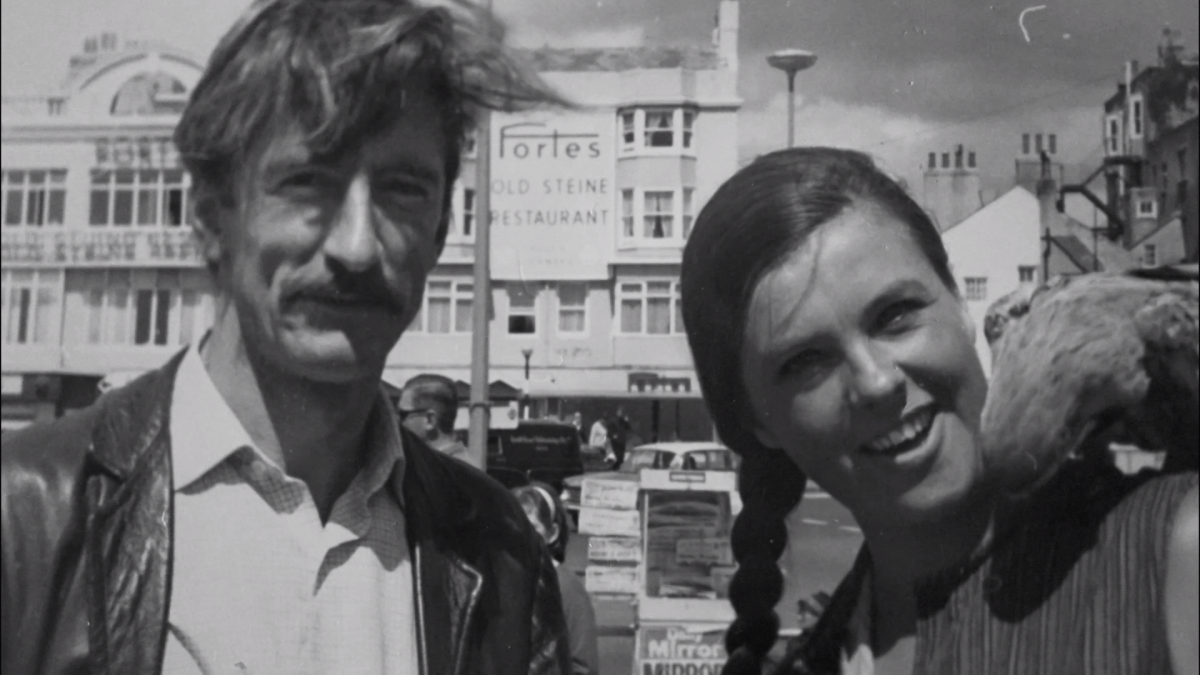
The entire 1970s was a critical period for the transformation of Brigg's life and creation. His mother died on Christmas Day in 1971 from leukemia, and nine months later, his father died of stomach cancer. But the tragedy seems to have not ended. His wife suddenly felt unwell on Christmas Eve in 1972. Two months later, Jean also died of leukemia due to the same cause as her mother. Lost a loved one in a row for 3 years. From then on, everything in this world has an unrealistic quality to Brigg.
Published in 1973, "Santa Claus" established Brigg's unique style and was a watershed in his creation. His first use of comic strips in a children's picture book seems to be an interesting Christmas adventure, but compared to his earlier works, all of his works after his bereavement have a tone of loss and death. Each is an elegy for life, hiding his anger and sadness.
Unlike the general impression of Santa Claus who always smiles, "Santa Claus" depicts a different kind of Santa Claus. Even though he keeps complaining about the bad weather, he is still dutifully delivering gifts on the cold Christmas Eve. Just like Brigg's father, no matter how bad the weather is, he always delivers milk on time, rain or shine, for 37 years. Indeed, Brigg recreates the image of Santa Claus with the attitude of his father as a laborer, and also makes their figures meet between the pages of the book.

When Brigg realized that it would take more than 32 pages of drawings to tell the story in its entirety, he decided to borrow a comic book storyboard. This was before the term "Graphic Novel" came into existence, and comic strips were seen by the elite as unremarkable vulgarity, but Brigger was convinced that the format of comic books was actually more slender than the typical children's The book format has many more uses, and when used well, can effectively combine the language of literature and pictures.
Brigg is a craftsman who pursues the ultimate perfection, and he handles all the details of a book by himself. From the picture of "Santa Claus", it can be seen that he is proficient in various materials and techniques, including ink, pastel, pencil, watercolor, crayon, etc. He is also good at using the effects of etching, printing, and scratching. He narrates the steps of daily life along the time axis in detail, depicting the ordinary objects almost obsessively. Like a bricklayer, he paints the walls frame by frame, painstakingly constructing the narrative and giving the pictures deep and rich information.
For ordinary people, these seemingly trivial things are the sum total of life, and "Santa Claus" gently reminds that the true rewards of life, and the only respite from our endless distress, is simplicity. thing. This book allows Brig to win Kate again. Greenway Award, and was selected as one of the ten best books in this award. Two years later, he released a sequel, " Father Christmas Gose on Holiday ," which he wrote separately, dedicated to his parents and wife.
After a devastating bereavement, Brigg devoted himself to the dark and joyous book Fungus the Bogeyman . Fungus is a green fungus who lives in a sinister world full of snot and mucus, and his mission is to bring inexplicable dirt and corruption to the world. But Brigg subverted people's imagination of monsters. He created a complete different world with an encyclopedic spirit and details. Fungus is obviously a working class in the monster world, but he is smart, loving, and eager to learn. Lige's hero.
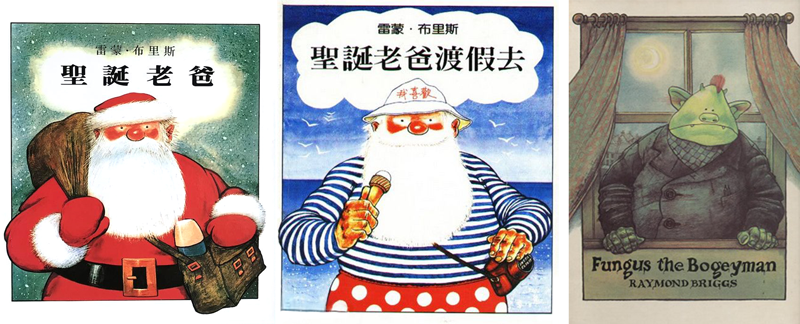
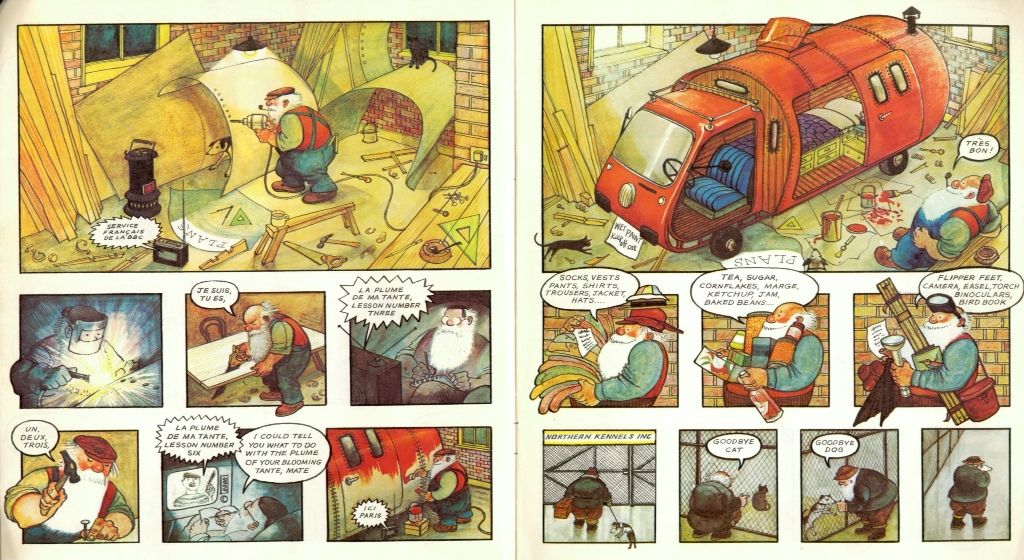
The book had a long gestation period, went through several major revisions, and even aroused criticism from intellectuals after its publication, but it sold well. With the rise of punk culture, Fungus successfully rode the wave of anti-establishment culture that was prevalent among British and American youth at the time, and also inspired rock musician Paul . Paul McCartney wrote the song "Bogey Music" in 1980. In many respects, it can also be regarded as William. The precursor to Shrek , published by William Steig in 1990.
Christmas returns year after year, and while it is full of joy, it brings Brigg with deep sadness. He turned the world out of the door, pretended to be grumpy, and poured all his emotion into his work. But he realized that he had been drowning in the mud of Fungus for too long, and he wanted to change, to do something "clean, pleasant, fresh, wordless and fast."

"The Snowman" is Brigg's most popular work and the "outlier" among all his works. When Brigg first presented the manuscript to his longtime editor, Julia MacRae, she was overwhelmed. MacRae recalled the scene: "When I read his work, he didn't like to stay in the room and would go outside. When he came back, he found me teary-eyed and he asked: You don't like it? I said , Raymond, my tears are just pure joy because it's so beautiful."
Drawing with only crayons and colored pencils, this wordless picture book conveys great power in peace. Readers follow the boy and the snowman on a fantastical roaming, and the soft and light brushstrokes are full of strong visual appeal. When the snowman melts away without a trace, the seemingly dreamy fairy tale hides absolute darkness. Brigger brings an extraordinary level of honesty to children's books, sticking to the true feelings of childhood, unafraid to tell children the truth about life and death, and the inevitability of loss.

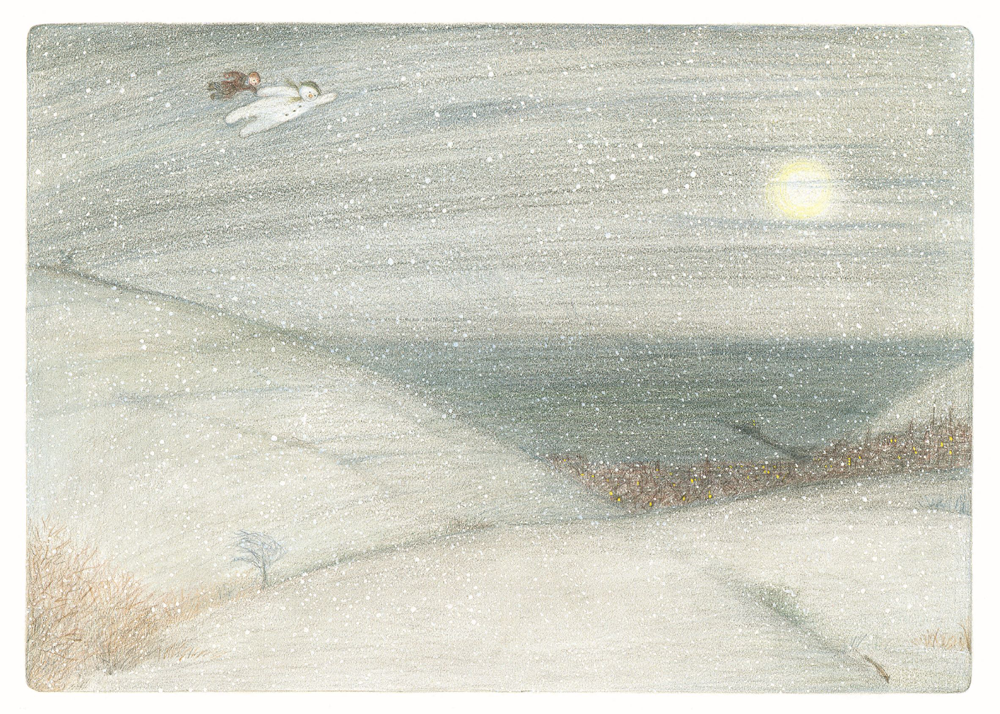
Brigg's 1980 release of " Gentleman Jim " foreshadowed a new phase in which the artist would focus on satirical criticism of politics. Jim is a naive, uneducated toilet cleaner who dreams of an adventurous life, but is persecuted by an indifferent bureaucracy, imprisoned and tried. Brigg chimed in for the little man's elegiac, and two years later published When the Wind Blows .
Like most vulnerable people, Brigg's parents have always respected authority, and the almost ignorant old couple in this book is based on Brigg's own parents. When they face the threat of international power competition, they still absurdly abide by the "Nuclear War Air Defense Refuge Manual" issued by the state, believing that this can protect them. If the Second World War can be endured with perseverance, their unchanging little days should last forever.
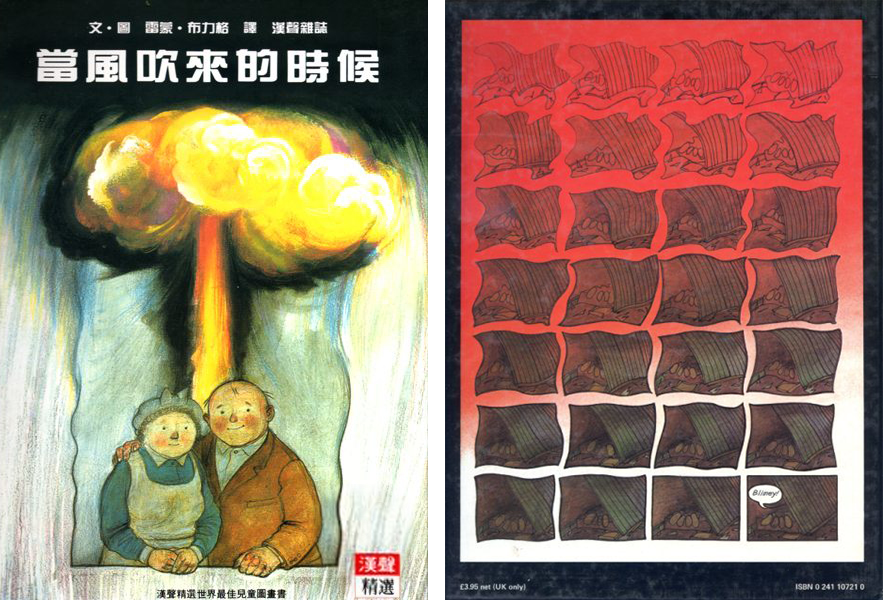
In the 1980s, a decade of revival of extreme right-wing reactionary political ideology under Reagan in the United States and Thatcher in the United Kingdom, the nuclear war between the West and the Soviet Union became a pressing issue. The near-blank spread in the book, when nuclear devastation occurs, is one of the most horrifying blanks in the history of picture books. In the end, the story comes to an abrupt end, and the victims who have entered the valley of death still don't know the end of their lives, which is heartbreaking. Brigg used the power of silence to give a painful warning.
The world is not benevolent, and all things are regarded as dogs. Politicians lightly start the war for their own pride and vanity, and never stop. In response to the Thatcher government's invasion of the Falkland Islands in 1982, Brigg published The Tin-Pot Foreign General and the Old Iron Woman in 1984. Although he adopted the structure and narrative of a children's picture book, it contained Intense taunts of leaders and indictments of frenzied military operations are entirely adult-oriented works.
Since he published " Midnight Adventure " and " The Strange House " based on his own childhood stories in 1961, Brigg has continuously transformed his own experiences into stories through creation. In each book, He hides a part of his life. In 1998, he published " Ethel & Ernest: A True Story ", in the form of an image documentary chronicle, affectionately telling the story of his parents falling in love at first sight in 1928 and passing away in 1971.
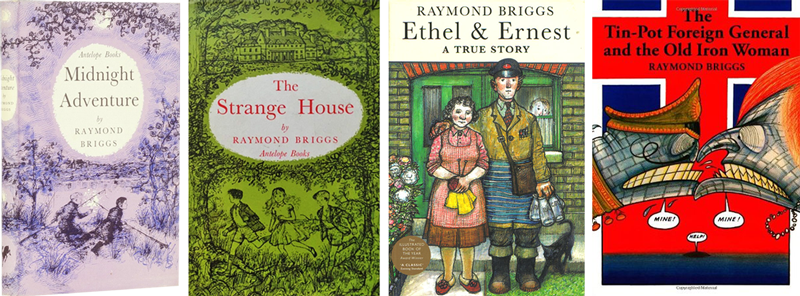
This ordinary couple has experienced all kinds of major historical moments in the 20th century. Whether it is the Great Depression, the urgency of World War II, or the financial austerity after the war, they have always supported each other and shared joys and sorrows. Brigger describes the details of the family in detail, and uses these weights of life piled up from scratch to present a real, moving and simple micro-social history.
It's a fearless book, and most people shy away from self-presentation, but Brigg chose to create a look back at his life and that of his parents. When he drew the scene of the death of his parents at the end of the book, he could only work for 15 minutes at a time, because it was really painful, painful, because of the serious stare. "The good things in life are not firm, and the colorful clouds are easy to disperse and the glass is brittle." This book, written in the name of my parents, is actually an eternal memory of the "three of us".
Brigg has always been an uncompromising, bold, unique and generous artist. In 2012 he was named the first cartoonist to be inducted into the UK Comics Hall of Fame, and in 2017 he was awarded the Book Trust's Lifetime Achievement Award for his enduring contribution to children's picture books. Brigg, who always thinks he is an outsider, walks on the border of children's books and comics, and finally proves that the cross-border challenge is successful!
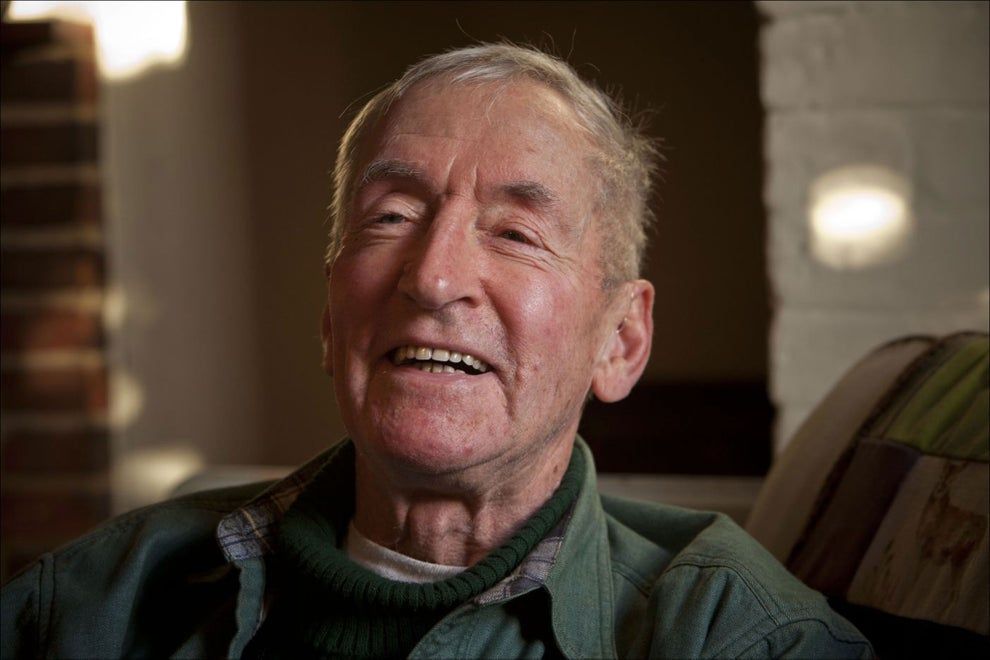
Since his partner of 40 years, Liz, died of Parkinson's disease in 2015, Brigg, who was already withdrawn, has become even more withdrawn. Perhaps because of nostalgia, even though his books have been sold all over the world, nine of his works have been adapted into films, and a large number of merchandise has been released, he still lives in a cottage in the country, filled with all kinds of things related to his parents. And maybe because he is not close to the world, every once in a while, the news of his death will be inexplicably spread.
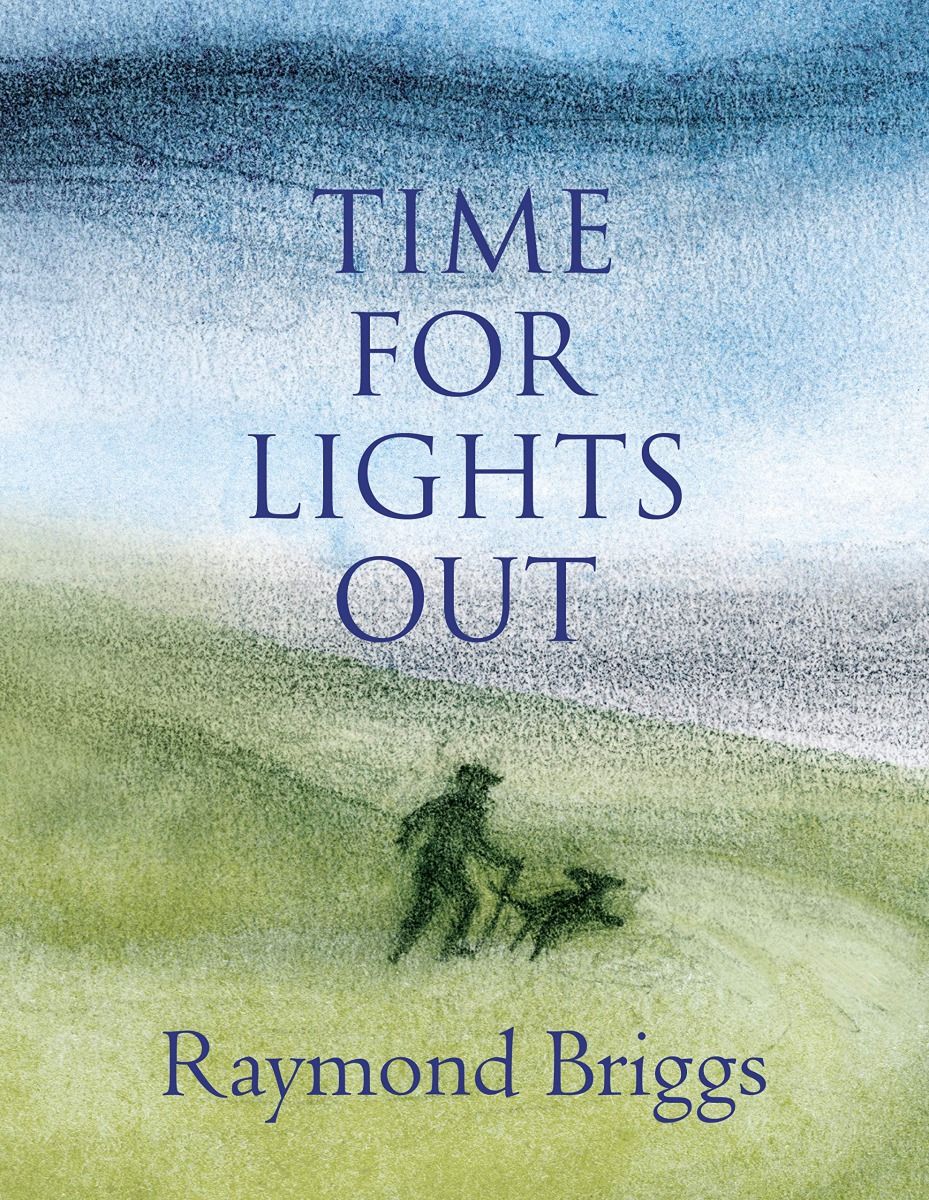
Brigg was once the British Poet Laureate Ted. Ted Hughes is an illustrator of a collection of poems, and now he is as Hughes said in his poem: "As if a ghost rattled around the house." The shadow of his mother's dementia before his death was still there. It was filled with notes of various words. In 2019 he launched Time for Light Out , a book he spent 15 years creating that combines painting and poetry, sketching and doodles, as well as observation, memory and photographs. He muses on aging and death, but also his childhood and nostalgia for his parents, sometimes comical, sometimes melancholy, like a work that can never be finished.
Zhang Ailing once said: "They just lie quietly in my blood, and die again when I die." Brigger spent his whole life summoning the images of his parents, his parents and his loved ones in different works. , Reborn again and again in his books, maybe they never left, just wait for the future, and they can finally be reunited. ●( The original text was first published in OPENBOOK Reading Journal on 2020-12-30)


Like my work? Don't forget to support and clap, let me know that you are with me on the road of creation. Keep this enthusiasm together!





- Author
- More